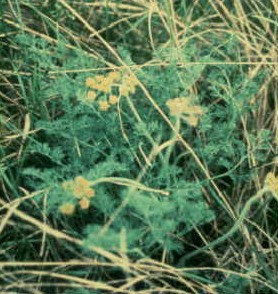Desert biscuitroot facts for kids
Quick facts for kids Desert biscuitroot |
|
|---|---|
 |
|
| Scientific classification | |
| Kingdom: | |
| (unranked): | |
| (unranked): | |
| (unranked): | |
| Order: | |
| Family: | |
| Tribe: |
Selineae
|
| Genus: | |
| Species: |
L. foeniculaceum
|
| Binomial name | |
| Lomatium foeniculaceum (Nutt.) J.M.Coult. & Rose
|
|
Desert biscuitroot (scientific name: Lomatium foeniculaceum) is a cool flowering plant that belongs to the carrot family. You might know some of its relatives, like parsley or dill! This plant is often called "desert biscuitroot" because of its interesting root and where it grows.
You can find desert biscuitroot growing naturally across western and central North America. It's quite adaptable and can live in many different kinds of places, from dry deserts to open grasslands.
What Does Desert Biscuitroot Look Like?
Desert biscuitroot is a type of plant called a perennial herb. This means it's not a tree or a bush, and it lives for more than two years. It usually grows up to about 30 centimeters (about 12 inches) tall.
Roots and Leaves
Instead of a regular stem, this plant grows from a thick main root called a taproot. Imagine a carrot; that's a taproot! From the ground level, it sends up its leaves and flower stalks.
The leaves of the desert biscuitroot can be up to 30 centimeters long. They are very finely divided into many tiny, narrow pieces, almost like delicate feathers.
Flowers and Scent
The flowers grow in a special shape called an umbel. This means they form a flat-topped or rounded cluster, like the spokes of an umbrella. The small flowers are usually yellow, but sometimes they can have a purplish color.
One cool thing about this plant is its strong smell! The leaves are actually edible and taste a lot like parsley, which makes sense since they are close relatives.

